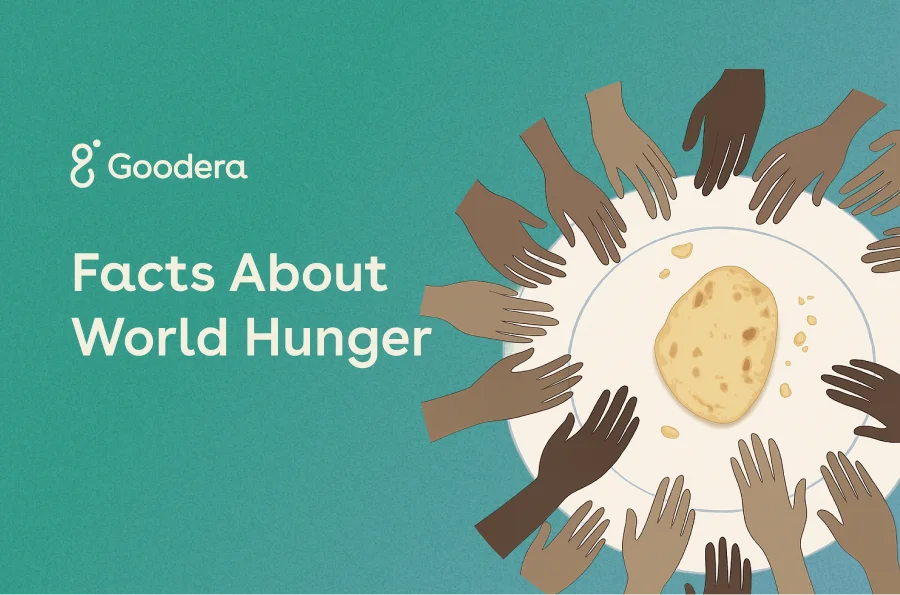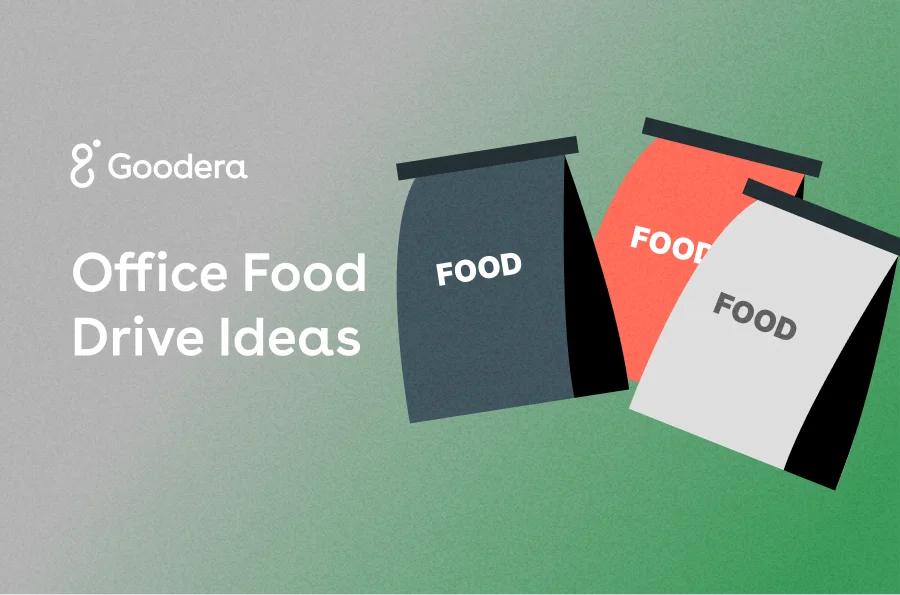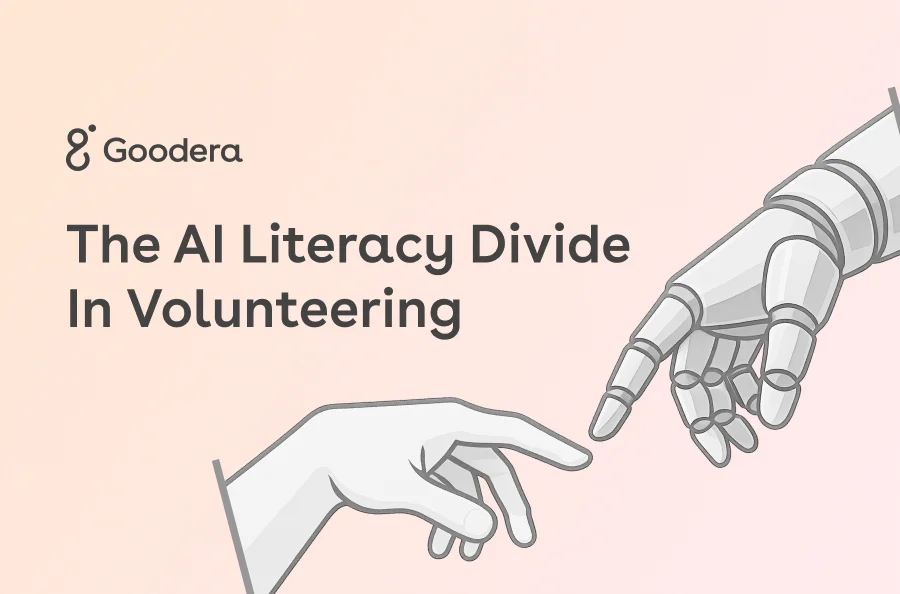Hunger Action Month 2025: Ideas, Impact, and How to Get Involved
Hunger doesn’t always scream. Sometimes, it looks like rationing bread. Hunger Action Month is a call to action change, change that brings respite to the silent struggles faced by thousands in our country, and a few hundred million across the globe.
💡 Did you know?
About 733 million people across the world go hungry every day. That’s 1 in 11 people struggling to get 2 square meals a day.
Hunger Action Month 2025 is a national call to compassion and a chance to do something. Every September, communities, businesses, and individuals come together to fight hunger with empathy, urgency, and purpose.
In this blog:
- What is Hunger Action Month?
- Why Hunger Action Month Matters in 2025?
- How to Organize a Hunger Action Month Food Drive at Work?
- Hunger Action Month Ideas for the Workplace
- Measuring and Sharing Impact
What Is Hunger Action Month?
Hunger Action Month is a nationwide awareness campaign observed every September to raise awareness against food insecurity in the United States. Launched by Feeding America in 2007, it invites individuals, companies, and communities to stand together in the fight to end hunger through education, advocacy, fundraising, and direct support.
But what is Hunger Action Month really about? It’s a reminder that while hunger might not always be visible, it is always present. For children heading to school with empty stomachs, for families forced to choose between groceries and rent, for seniors rationing meals to afford medication, this month shines a light on stories often left in the dark.
And it doesn’t stop at awareness. Hunger Action Month is about mobilizing real change through small and big actions, like:
- Hosting a Hunger Action Month food drive
- Volunteering at your local food bank
- Organizing a meal-packing session at your company
- Donating to frontline hunger-relief organizations
Every action, no matter how small, can create a ripple of change.
Why Hunger Action Month Matters in 2025
Hunger Action Month 2025 comes at a time of rising inflation, growing populations, and compounding global crises. Food insecurity is a chronic emergency affecting millions worldwide. With increasing inflation and population, resources stretched thin, homelessness and poverty on the rise, pandemics and epidemics, and natural disasters, the need for action is now. Hunger Action Month 2025 is needed now more than ever.
Global Hunger is at Alarming Levels
Hunger has reached staggering levels worldwide, with millions unable to access the most basic human need, food. What used to be isolated emergencies are now widespread, chronic crises touching nearly every continent.
Behind every number is a child, a parent, a family fighting to survive each day:
- 343 million people in 74 countries were identified as acutely food insecure as of November 2024; 319 million faced the same crisis mid‑year .
- A staggering 1.9 million are facing catastrophic hunger, on the brink of famine, in places like Gaza, Sudan, South Sudan, and Mali
- Another 58 million could slide into starvation unless critical aid arrives, the UN WFP warns of major funding shortfalls in regions like Gaza, Syria, and Congo.
Compounding Crises Add to the Existing Food Shortage
Food insecurity doesn’t exist in isolation. Armed conflicts, climate disasters, and economic instability are colliding, creating a perfect storm. As the cost of living rises and agricultural systems are disrupted, already vulnerable communities find themselves pushed further into crisis.
- Conflict is the primary driver for hunger: 65% of those facing severe hunger live in war zones.
- Climate disasters, like drought and floods, are reaching record levels, decreasing crop yields, and destabilizing millions of food systems.
- Humanitarian aid is falling short: WFP reports a 40% drop in funding, putting 58 million people at risk of starvation.
Why Your Workplace’s Involvement Matters
- Moments like Orange Day or a Hunger Action Month food drive aren't symbolic—they are lifelines for families and communities.
- Your team's actions tap into this critical moment, turning empathy into emergency relief and solidarity into social stability.
- Every drop-off, donation, or advocacy gesture during Hunger Action Month 2025 contributes to global resilience.
These aren't distant stories; they’re happening now. It’s second nature for some of us to wonder what to eat, whether to indulge a craving or skip a meal. But while we’re choosing, countless families are wondering if they’ll get to eat at all.
How to Organize a Hunger Action Month Food Drive at Work?
A successful Hunger Action Month food drive starts with thoughtful planning. From choosing the right nonprofit partner to setting achievable goals and engaging your team, each step plays a role in creating real impact.
According to Feeding America, approximately 43% of food bank donations are driven by corporate and employee giving campaigns, making workplace initiatives one of the most effective tools in combating hunger.
Some companies partner with local food banks like City Harvest to run in-person drives with collection bins in office lobbies. Others, like Google and Salesforce, run virtual drives using Amazon Wishlists or platforms like YouGiveGoods to collect donations remotely. Whether you're packing meal kits in-office or donating snack packs online, the key is thoughtful coordination.
In this section, we’ll break down how to organize a food drive at work, covering everything from logistics to virtual adaptations, so that your team’s contributions are both seamless and meaningful.
1. Identify a Local Partner or Food Bank
Start by identifying a nonprofit partner or food relief organization you want to support. This could be a local food bank, a shelter, a school meal program, or a national network like Feeding America or No Kid Hungry.
Choosing the right partner ensures your donations are going where they’re most needed. Local organizations can also provide you with a priority list of items, help you estimate quantities, and even support logistics for collection or delivery.
Many corporate offices in New York have partnered with City Harvest for recurring food drives. The organization provides collection bins, branding support, and logistics making it easy for companies to get involved.
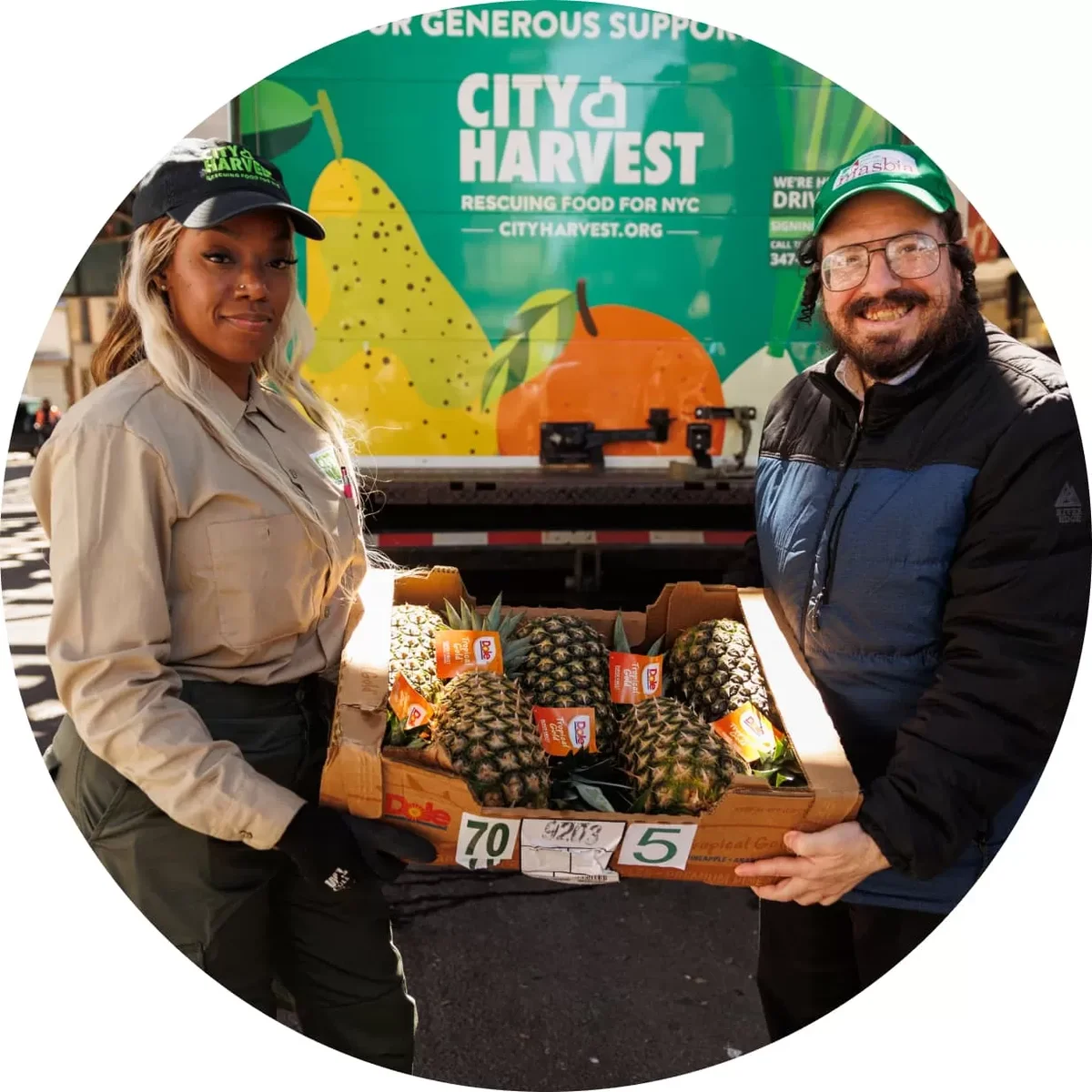
2. Choose the Right Format for Your Workplace
Think about what will work best for your team. Are you fully remote, hybrid, or all in one place? Each model comes with different opportunities:
- In-person food drive: Set up visible donation bins in high-traffic areas like the lobby or break room. Include signs showing what items are needed most.
- Virtual food drive: Use online platforms like YouGiveGoods or Amazon wishlists to allow employees to donate from anywhere.
- Hybrid model: Offer both digital and physical ways to contribute. This allows broader participation and encourages teams across locations to get involved.
Companies like Google and Salesforce have successfully used Amazon Wishlists for their virtual drives. Employees could order items to be delivered directly to the nonprofit partner’s address.
3. Set a Clear Goal and Timeline
Give your drive structure by setting a goal that your team can rally behind. This could be the number of items collected (e.g., “1,000 canned goods”) or families supported (e.g., “Feed 50 households for a week”).
Include a firm timeline: drives that run for 1–2 weeks tend to maintain better momentum than open-ended campaigns. Post regular updates to keep energy high and show progress toward the goal.
📌 Tip:
Use a digital counter or a visual tracker like a thermometer on your intranet or breakroom whiteboard. It creates a sense of urgency and shared ownership.
Here’s a sample for you:

4. Promote Internally with a Strong Narrative
People don’t give just because you ask—they give because they care. That’s why it’s important to go beyond logistics and build a story around your food drive.
Use internal communication tools to explain the why behind your drive. Share a personal story, a powerful stat (like “1 in 11 people globally go hungry every day”), or a message from a nonprofit partner.
Promotion channels to use:
- Slack announcements or Teams posts
- Weekly internal newsletters
- Posters or digital signage
- CEO or leadership shoutouts
Here’s a sample poster idea for you:

According to a recent report, companies that linked their drives to employee stories or team milestones (like work anniversaries or volunteer days) saw higher participation and deeper emotional connection.
5. Make Participation Easy, Fun, and Engaging
Participation drops when processes are complex. That’s why the best food drives keep things simple, flexible, and engaging. Encourage employees to give in whichever way feels easiest—whether it’s dropping off a physical item, making a digital donation, or rallying their team to contribute together. The more accessible it is, the more momentum you’ll build.
Here are some creative ways to add energy and fun to your food drive while keeping engagement high:
- Department Competitions: Create a little friendly rivalry between departments. See which team can collect the most donations or assemble the most snack packs. Offer small prizes like lunch vouchers, shoutouts at team meetings, or a traveling trophy to build motivation. Adding a leaderboard or live tracker can boost participation and visibility throughout the drive.
- “Sponsor-a-Family” Impact Cards: Print out impact cards with the basic grocery needs of a real or hypothetical family. For example, "A family of 4 needs: 2 boxes of cereal, 4 cans of beans, 1 jar of peanut butter." Employees can pick a card and commit to fulfilling it. It personalizes the experience and makes it more tangible than a general ask for donations.
- Themed Donation Days: Spice up the calendar with themed giving days. This keeps the drive top of mind and adds a bit of structure and fun.
For example:
- Canned Goods Monday: Ask for canned vegetables, soups, or beans.
- Toiletries Tuesday: Collect hygiene kits—soap, toothpaste, sanitary products.
- Wellness Wednesday: Focus on healthy snacks like granola bars or dried fruit.
- Snack Packs Friday: Assemble ready-to-eat snack kits for kids.
These mini-themes break up the week, spark anticipation, and make participation more accessible for those who want to contribute in smaller, more intentional ways.
6. Focus on What’s Actually Needed
The most impactful food drives don’t just collect more, they collect what matters.
Every nonprofit has different needs depending on the community it serves. Some may need baby formula and sanitary products; others might urgently need culturally appropriate shelf-stable meals. That’s why the first step is to ask your nonprofit partner for a customized list of high-need items.
This ensures:
- Your donations are practical and immediately usable
- You avoid over-collecting items that can’t be distributed
- Your drive creates real value, not logistical challenges
Typical high-need items include:
- Canned protein (beans, tuna, chicken)
- Whole grain pasta, rice, and lentils
- Baby formula and kid-friendly snacks
- Soap, sanitary products, and toothbrushes
- Shelf-stable milk and plant-based dairy options
If you're running a virtual drive, you can also include donation tiers (e.g., $25 = a week of meals) to make giving more tangible.
7. Wrap It Up with Gratitude and Impact
Once your drive ends, don’t just drop off the donations and move on. Celebrate the collective effort: share photos of your final donation pile, stats on how much was raised, and quotes from your nonprofit partner.
This kind of storytelling reinforces your team’s sense of purpose and helps employees see the tangible results of their efforts, making them more likely to participate again.
If possible, invite a representative from the food bank to speak at an all-hands or virtual town hall. Let them explain the real impact of your contributions. This deepens the emotional connection and primes your team for future giving opportunities.
📌 Tip:
Document your food drive impact in your internal newsletter or create a CSR report. This boosts visibility and shows leadership the ROI of your employee-led initiatives.
Hunger Action Month Ideas for the Workplace
Hunger Action Month 2025 calls for immediate action. And the best ideas are the ones that make your team feel the urgency of hunger, reflect on their own access to food, and contribute meaningfully to those who go without. These creative, emotionally resonant workplace ideas go beyond donation bins. They make hunger personal. And that’s where real impact begins.
What are some simple ways employees can participate in Hunger Action Month?
Whether your team is in-office, hybrid, or remote, here are powerful Hunger Action Month ideas that drive participation and purpose
1. Empty Plate Awareness Exhibition
How can a simple display help your team understand hunger?
Set up an art installation using empty plates, each one representing a life touched by hunger. Layer powerful facts and anonymous stories alongside the display, and include QR codes that connect employees directly to your donation page or volunteer sign-up. Similar installations have been used in community centers and university campuses to raise silent awareness and invite meaningful engagement.
2. “What’s in Your Pantry?” Challenge
Invite employees to prepare meals using only the kinds of items found in a typical food pantry, canned beans, rice, pasta, boxed meals, and non-perishables. Teams can share photos, recipes, and stories. At the end of the challenge, encourage participants to donate those same ingredients. This idea gives employees a glimpse into the daily limitations faced by food-insecure families while doubling as a creative, budget-conscious team-building moment.
3. Adopt-a-Family Food Drive
Rather than asking for generic items, deepen the impact by partnering with a nonprofit to “adopt” specific families. The organization provides anonymized profiles (e.g., “Family of four, two kids under 10, dietary restrictions: gluten-free”), and employees or teams assemble tailored care packages that include groceries, personal-care items, and thoughtful notes.
This approach has several benefits:
- Personal connection: Donors know who they're helping, making the act far more meaningful.
- Targeted impact: You provide exactly what each family needs, reducing waste and ensuring relevance.
- Team cohesion: When employees work together on a shared family’s kit, they bond over a collective goal.
For added engagement, consider displaying “how many families have been supported” or sharing thank-you messages (with permission). This direct, human-centered approach transforms charitable giving into a profoundly personal experience.
4. Fast for a Day, Feed for a Week
Can skipping one meal help feed someone else for a week?
Encourage employees to skip one meal, reflect on their actions, and donate the cost to hunger relief efforts. Pair it with a virtual reflection board where participants can share what the experience made them feel. One nonprofit partner saw engagement skyrocket when they offered employees alternative ways to participate, like sharing a hunger stat on social media or sponsoring someone else’s meal.
5. Sponsor a School Breakfast Program
Hunger impacts learning, and skipping breakfast can mean students start their day distracted and low on energy. Partner with a nonprofit or local district to fund meals for one school throughout the month. Salesforce has consistently supported breakfast programs for low-income schools as part of its broader community impact work. A thank-you note from a student or a principal at your next town hall can bring the impact home for your team in the most meaningful way.
6. “The Hunger You Don’t See” Story Wall
Start a Slack channel, hallway display, or microsite where you publish real hunger stories throughout the month. These can come from your nonprofit partners, public databases, or even employees who’ve faced food insecurity themselves. When one media company piloted this last year, it led to unexpected conversations in team meetings and even led to a new food stipend policy for interns.
7. “Orange is the Color of Hunger” Office Takeover
Add orange accents throughout your physical or digital workplace—whether it’s Zoom backgrounds, Slack emojis, or orange lights in the lobby. On “Orange Day,” invite your team to wear orange, take a group photo, and post hunger facts on LinkedIn or your company intranet. At Walmart’s headquarters, a similar awareness campaign turned into a month-long food donation competition between departments, raising over 25,000 meals.
How Do You Measure the Real Impact of Hunger Action Month?
When measuring the impact of Hunger Action Month programs, food drives and volunteer hours matter, but so do the conversations sparked and the awareness raised. To keep the momentum going (and to inspire deeper involvement year after year), your impact needs to be seen, felt, and shared.
Whether you're hosting a food drive or organizing creative activities, these strategies will help you measure success and turn your team's effort into lasting impact.
1. Start with What You Can Count
The best way to showcase the success of your Hunger Action Month initiative is by tracking tangible impact. These numbers tell a story of community, compassion, and coordination. Sharing them across your internal comms, town halls, and CSR reports can boost visibility, celebrate employee contributions, and inspire even broader participation next time.
Begin by tracking the basics:
- Total items collected (cans, care kits, meals packed)
- Number of volunteers who participated
- Volunteer hours logged
- Amount raised in donations or matched funds
If you’re partnering with a nonprofit, ask them what metrics matter most to them—they can often share data on how your contributions directly helped families or communities.
2. Share Stories, Not Just Numbers
Numbers show scale. Stories show heart.
Pair your quantitative data with photos, quotes from employees, or notes from beneficiaries. Was there a moment that stood out during your food drive? Did a team member share a personal story about growing up food insecure? Capture those moments and give them a spotlight in your company newsletter, Slack, or town hall.
3. Turn Recognition Into Motivation
Celebrate your volunteers. Spotlight departments or individuals who went above and beyond during your Hunger Action Month campaign. A thoughtful “thank you” goes a long way, especially when paired with something employees can proudly carry or wear.
Tip: Create a “Hunger Action Month Champion” badge, profile tag, or leaderboard on your internal platform.
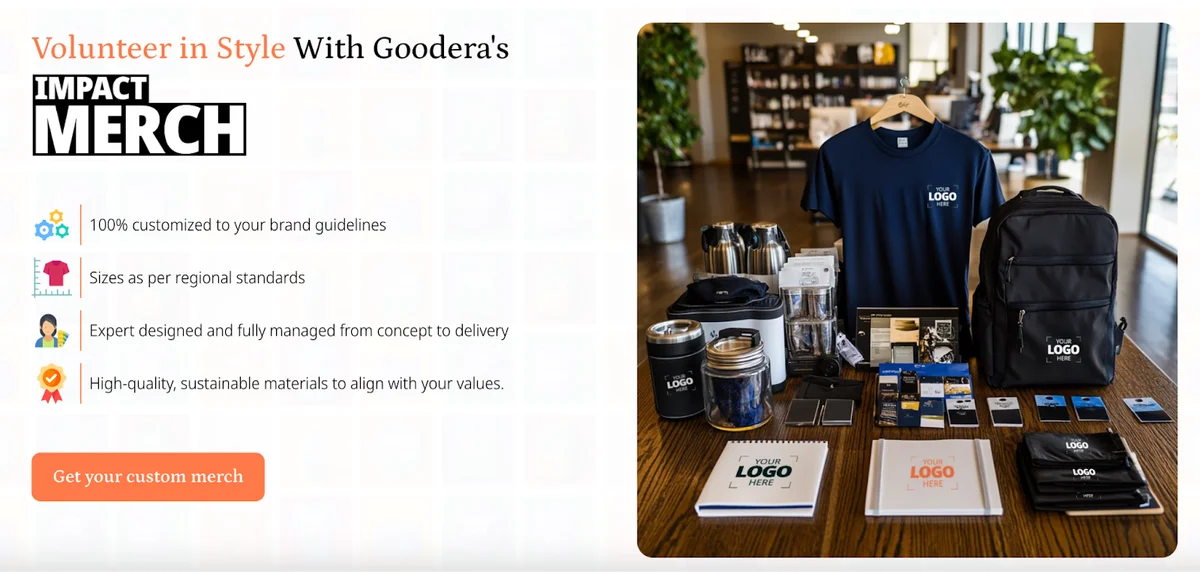
Looking for a tangible way to reward participants? Explore Goodera’s Impact merch store for branded apparel, impact-themed stationery, and volunteer swag that honors their contribution while spreading the message even further.
4. Keep the Conversation Going
Impact shouldn’t end with September. Create a recap post or video that highlights what your company achieved during Hunger Action Month 2025. Share it internally, and on LinkedIn or your company blog, to inspire others.
If you worked with a nonprofit, ask them for a short follow-up: how were the donations used, what happened next, what’s still needed? This keeps your people connected to the cause beyond just one month.
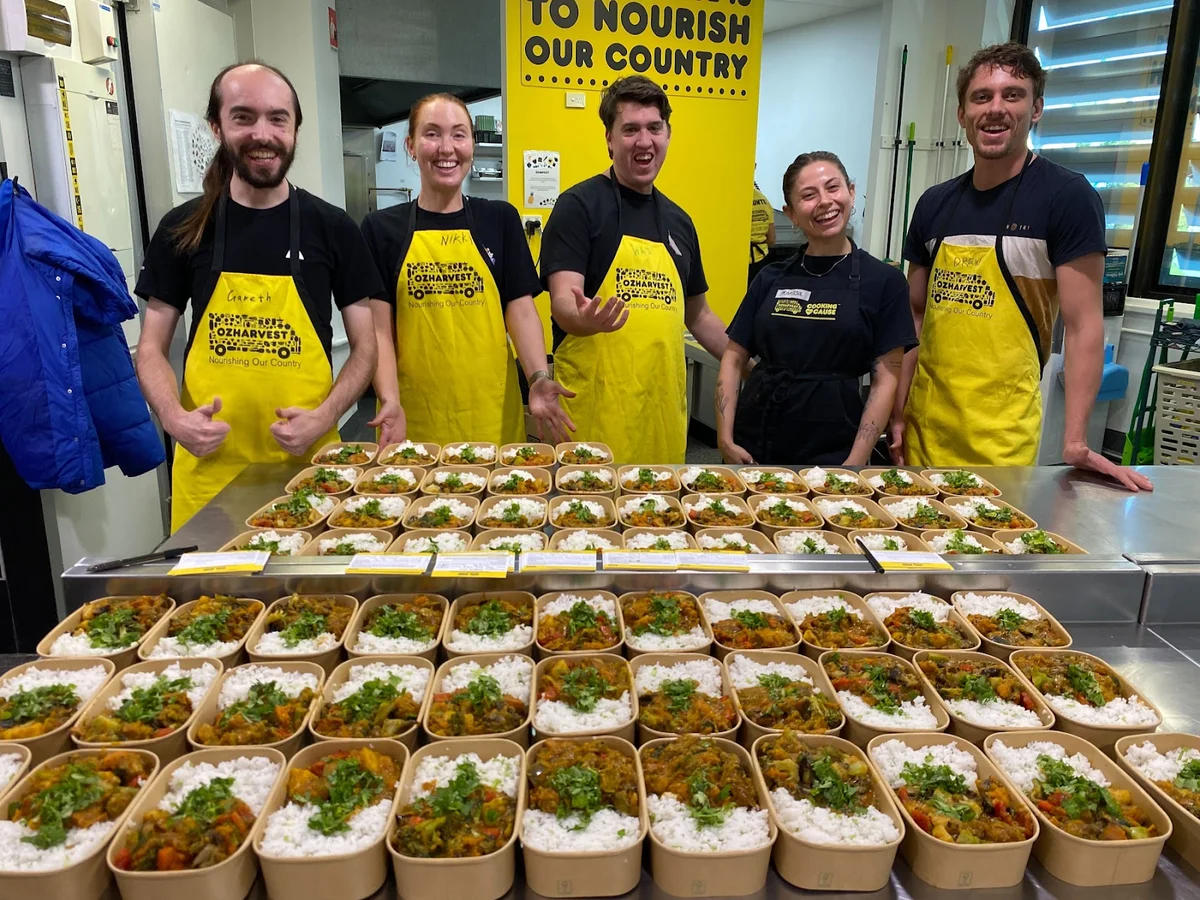
Turning Compassion Into Commitment
Hunger is one of the most urgent, yet solvable problems of our time. It affects millions, not because there isn’t enough food, but because access is unequal, and awareness alone doesn’t drive change.
That’s where your workplace comes in. Every food drive, volunteering hour, or advocacy campaign has the power to move the needle, not just in September, but all year long.
At Goodera, we make that easier. From coordinating meal-packing events to launching virtual food drives with vetted nonprofits, we help companies turn good intentions into tangible impact. Our network of 50,000+ nonprofits and turnkey experiences ensures your Hunger Action Month campaign is powerful, seamless, and is felt where it matters most.
Use this September to ignite something long-lasting. Start small, aim big, and bring your people together for good.
Frequently Asked Questions
1. When is Hunger Action Month 2025?
Hunger Action Month takes place every September. In 2025, it runs from September 1 to September 30, with Orange Day (the national day of awareness) observed on Friday, September 5, 2025. It’s a time when individuals, workplaces, and communities unite to fight hunger and raise awareness.
2. How can companies get involved in Hunger Action Month?
Companies can participate by hosting food drives, organizing volunteering events, sharing hunger awareness content, or collaborating with local food banks and nonprofits. Even simple actions like wearing orange or sharing statistics on LinkedIn can help amplify the message.
3. What are the best food drive ideas for the office?
Top office-friendly food drive ideas include:
- Department vs. department donation challenges
- Themed collection weeks (breakfast week, pantry week, etc.)
- Adopt-a-family kits
- Pack-a-meal volunteer events
- Matching donation campaigns
These ideas make participation fun, impactful, and team-oriented.
4. How can remote teams support Hunger Action Month?
Remote teams can run virtual food drives, host online fundraisers, or support nonprofits through digital volunteering. Creating Slack channels for awareness, organizing storytelling sessions, and sponsoring local food banks in employees’ hometowns are also great ways to contribute from anywhere.
5. What is Orange Day?
Orange Day is typically observed on the first Friday of September during Hunger Action Month. People wear orange—the color of hunger awareness—to show solidarity with those experiencing food insecurity and to encourage others to join the cause.
6. How do you organize a Hunger Action Month food drive at work?
Start by partnering with a local food bank or hunger relief nonprofit. Then:
- Set a clear goal (items collected, families supported, etc.)
- Pick a theme or challenge format
- Promote it across internal channels
- Offer ways to donate online for hybrid or remote teams
- Celebrate milestones and share the impact afterward
7. What kind of items should you collect for a food drive?
Most requested items include:
- Shelf-stable proteins (canned tuna, beans, peanut butter)
- Grains and pasta
- Baby food and formula
- Hygiene products
- Low-sodium, low-sugar items
Always check with your local food bank for their most needed items.







